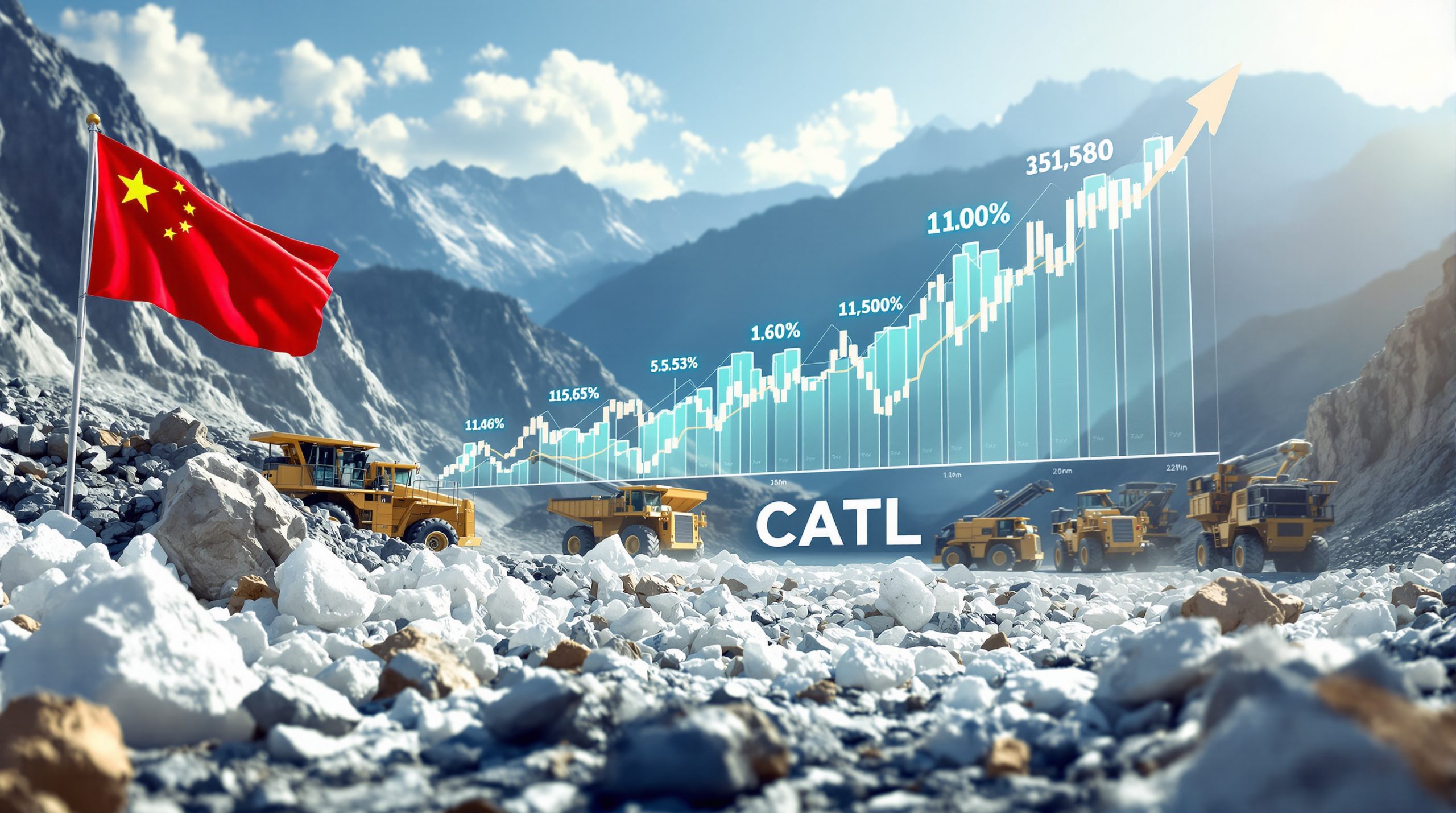What Are Critical Minerals and Why Do They Matter?
Critical minerals are essential resources that power modern economies and technologies. For South Africa, these minerals represent both a significant economic opportunity and a strategic imperative. The country's vast mineral wealth positions it as a key player in global supply chains, particularly as the world transitions toward green industrialization, decarbonization, and digital transformation.
Critical minerals such as platinum group metals (PGMs), manganese, vanadium, rare earth elements (REEs), and lithium are increasingly vital for technologies including electric vehicles, battery storage, renewable energy infrastructure, and green hydrogen production. With global demand for these minerals projected to surge by up to 500% by 2050 according to World Bank forecasts, South Africa stands at a pivotal moment to leverage its natural resources for sustainable economic growth.
"Critical minerals such as lithium, cobalt, rare earth elements, and platinum group metals are essential for realising technological and sustainable development objectives." — South African Critical Minerals Strategy
These minerals enable not only clean energy technologies but also power microelectronics, digitisation, medical devices, and advanced manufacturing processes that underpin modern economies. South Africa's platinum group metals, for instance, are crucial drivers of hydrogen fuel cell technology, positioning the country as a potential leader in the emerging global hydrogen economy.
Why this matters regionally:
- South Africa's PGM reserves (88% of global supply) represent an unparalleled strategic advantage in catalyst technologies
- Manganese and vanadium deposits position the country strongly in both traditional steel and emerging energy storage markets
- The potential for regional integration through mineral value chains offers South Africa beneficiation opportunities across the entire Southern African Development Community (SADC)
How Does South Africa Define Critical Minerals?
South Africa defines critical minerals as "minerals that are essential for the overall economic development, job creation, industrial advancement and contribution to national security." This definition reflects the country's focus on using its mineral resources to drive inclusive growth and economic transformation.
The classification of critical minerals in South Africa follows a rigorous methodology based on five primary criteria:
- Export significance
- Local economic significance
- Industrial importance
- Development alignment
- Global market demand
These criteria are evaluated using eight distinct indicators including supply risk, export potential, employment impact, domestic and export sales, substitutability, and importation requirements for locally unavailable resources. Each mineral receives a score from 1-10 across all five criteria, allowing for objective classification.
"Critical minerals are 'minerals essential for economic development, job creation, industrial advancement, and national security.'" — South African Critical Minerals Strategy
This comprehensive approach ensures the criticality assessment captures both domestic priorities and global market dynamics. For example, platinum group metals score highly due to their export revenue significance and industrial applications, while also contributing approximately 40% of mining employment in South Africa.
Important technical detail: The South African model differs from approaches used by the EU and United States by explicitly incorporating domestic development priorities rather than focusing solely on supply risk and economic importance. This reflects South Africa's dual role as both a major producer and an industrializing economy seeking to capture more value from its mineral resources.
South Africa's Critical Minerals List
Based on comprehensive analysis, South Africa has categorized its critical minerals into three tiers of criticality:
High-Criticality Minerals
- Platinum
- Manganese
- Iron Ore
- Coal
- Chrome Ore
- Gold
- Vanadium
Minerals with Moderate to High Criticality
- Palladium
- Rhodium
- Rare Earth Elements
- Copper
- Cobalt
- Lithium
- Graphite
Minerals with Moderate Criticality
- Nickel
- Titanium
- Phosphate
- Fluorspar
- Zirconium
- Uranium
- Aluminium
This classification provides clarity for investors, developers, communities, and trading partners about national priorities in the minerals sector.
The dynamic nature of criticality: It's worth noting that South Africa's classification system is designed to be updated periodically based on changing market conditions, technological developments, substitutability factors, and recycling rates. This ensures the strategy remains responsive to global mineral trends and uranium market dynamics.
Strategic insight: Despite their moderate criticality ratings, lithium and graphite have been prioritized for development due to their crucial role in battery applications and the significant growth projected in electric vehicle markets. This forward-looking approach demonstrates South Africa's commitment to positioning itself within emerging clean energy value chains.
Technical detail: Approximately 90% of globally produced manganese is used in steel production, highlighting why this mineral scores highly on industrial importance despite being primarily exported as a raw material rather than beneficiated domestically.
What Is South Africa's Mining Contribution to the Economy?
South Africa's mining sector remains a cornerstone of the national economy. Between 2020 and 2023, the sector contributed:
- 6.3-7.6% to GDP annually
- Significant tax revenue to the fiscus
- Employment for approximately 1 million people (including contractors)
- Foreign exchange through mineral exports
"Mining remains a cornerstone of the national economy, providing significant tax revenue, employment, and foreign exchange." — Minister Samson Gwede Mantashe
The country holds impressive global reserves, including:
- 88% of global platinum group metals
- 80% of manganese
- 72% of chromite
- 13% of gold
- 32% of vanadium
- 25% of zirconium
- 17% of fluorspar
In terms of production, South Africa ranks in the top three globally for:
- PGMs (59% of global production)
- Vanadium (25%)
- Ferrochrome (39%)
- Alumino-silicates (60%)
- Vermiculite (35%)
- Zirconium (32%)
- Titanium minerals (19%)
- Manganese ore (17%)
Export revenue significance: PGMs, gold, iron ore, and coal constituted 81% of total mining sales in 2023, demonstrating the sector's critical importance to South Africa's balance of trade and foreign exchange earnings. In particular, understanding iron ore price trends remains crucial for economic planning.
Challenges in value retention: Despite South Africa's dominance in chrome ore production, its market share in ferrochrome has declined from 39% in 2009 to 26% in 2019 due to smelter closures and international competition. This illustrates the need for strategic interventions to maintain competitiveness in value-added processing.
Regional context: Compared to other resource-rich nations like Australia, where mining contributes approximately 10% to GDP, South Africa's mining sector still has growth potential, particularly through capturing more value from mineral processing and manufacturing.
What Are the Strategic Pillars of South Africa's Critical Minerals Strategy?
The strategy is built around six key pillars designed to maximize the economic benefits of critical minerals:
Pillar I: Geoscience Mapping and Exploration
To address challenges in mining exploration, including limited greenfield exploration and regulatory bottlenecks, the strategy proposes:
- Streamlining regulatory requirements across licensing departments
- Augmenting the Junior Exploration Fund to increase investment in high-demand critical minerals
- Exploring the adoption of a flow-through shares scheme
Current gap: South Africa's exploration spending was only $117.4 million in 2023, well below the global target of 5% of mining GDP. The strategy aims to significantly increase this figure to unlock new mineral resources.
Pillar II: Value Addition and Localization
This pillar focuses on developing local processing capabilities across several strategic sectors:
Energy Storage Materials and Batteries:
- Positioning South Africa as a regional hub for processing and refining critical minerals
- Establishing lithium-ion battery assembly activities
- Developing vanadium redox flow battery manufacturing
Hydrogen and Fuel Cells:
- Creating world-class research and manufacturing hubs
- Building demonstration and manufacturing facilities for catalysts and fuel cell components
- Investing in hydrogen infrastructure
Ferrochrome and Ferroalloys Industry:
- Developing competitive electricity tariffs for the ferroalloys sector
- Exploring financial instruments on chrome ore exports
- Stimulating domestic demand for stainless steel
Steel Industry:
- Leveraging South Africa's access to renewable energy for green hydrogen-based steelmaking
- Implementing trade measures to support local industry
Automotive Sector and E-Mobility:
- Developing South African battery and fuel cell electric vehicle production capacity
- Engaging global auto companies for localization of electric vehicle manufacturing
- Developing electric vehicle charging infrastructure
Defense and Aerospace:
- Investing in R&D programs for titanium extraction and processing
- Developing local titanium component manufacturing
Economic impact potential: Local battery manufacturing across the African continent could create up to 2.3 million jobs according to estimates cited in the strategy. South Africa aims to capture a significant portion of this opportunity through strategic investments in processing capacity.
Pillar III: Research and Development and Building a Skilled Workforce
The strategy emphasizes:
- Establishing National Critical Minerals Research, Development and Innovation hubs
- Investing in R&D for battery materials, PGM-based catalysts, and advanced processing technologies
- Aligning education with industry needs to develop critical skills
- Creating accredited training programs for energy storage technology professionals
Strategic focus: National R&D hubs will prioritize development of PGM catalysts and battery materials to support domestic manufacturing capabilities and technological innovation in high-value segments of critical mineral value chains.
Pillar IV: Infrastructure and Energy Security
Key interventions include:
- Establishing special economic zones and beneficiation hubs
- Developing a Green Mining Infrastructure Support Initiative
- Addressing electricity costs associated with mining and processing
- Introducing water demand management requirements
Innovative approach: The "Green Mining Infrastructure Initiative" specifically addresses energy and water costs that have historically constrained beneficiation activities in South Africa, with a focus on renewable energy integration to improve competitiveness while ensuring critical minerals energy security.
Pillar V: Financial Instruments to Support Local Beneficiation
The strategy proposes:
- Introducing differentiated electricity tariffs for high-value processed minerals
- Providing R&D tax credits for technological innovations
- Fast-tracking permitting for strategically important projects
- Implementing local content policies to ensure domestic job creation
Policy innovation: Differentiated electricity tariffs for high-value mineral processing represent a targeted approach to address one of the main barriers to beneficiation in energy-intensive sectors like ferrochrome production.
Pillar VI: Harmonization of the Regulatory and Policy Framework
This pillar aims to:
- Address regulatory bottlenecks
- Align regulatory processes across departments
- Improve turnaround time for processing prospecting rights
- Create a one-stop shop licensing system
Implementation focus: The Junior Exploration Fund (R400 million) under Pillar I represents one of the concrete mechanisms already being deployed to advance the strategy's objectives of increasing exploration investment.
How Will South Africa Balance Exports and Local Beneficiation?
The strategy advocates for a balanced approach that addresses both immediate economic needs and long-term beneficiation capabilities. Key interventions include:
- Incentivizing local beneficiation while permitting targeted exports
- Promoting strategic allocation of mineral resources
- Developing an Export Management System
- Establishing a Market Intelligence Hub for Critical Minerals
- Improving investor confidence through roadshows and partnerships
- Encouraging public-private partnerships for processing and manufacturing facilities
"A balanced export strategy addresses immediate economic needs and long-term beneficiation capabilities." — South African Critical Minerals Strategy
Policy considerations: The strategy explores potential chrome ore export restrictions to revive the domestic smelting industry, similar to approaches used in other mineral-rich countries. This reflects a nuanced understanding that simply restricting exports without supporting domestic capacity can lead to market distortions.
Technical implementation: The proposed Export Management System would control raw mineral exports while providing incentives for local processing, while the Market Intelligence Hub would track commodity prices and supply risks to inform policy decisions.
Comparative case study: The strategy notes Indonesia's nickel export ban (2020), which helped boost the country's export value from $3 billion to $30 billion in just two years by forcing investment in domestic processing. South Africa aims to learn from such examples while developing its own contextually appropriate policies.
Regional context: Unlike Zimbabwe's abrupt raw lithium export ban in 2022, South Africa's approach emphasizes gradual transition with supportive policies to build domestic capacity before implementing export restrictions.
What Are the Key Considerations for Successful Implementation?
The Circular Economy and ESG
The strategy recognizes the importance of sustainable practices and proposes:
- Investing in critical minerals recycling
- Developing a decarbonized mining and smelting framework
- Building competency to extract minerals from secondary sources
- Investing in cleaner coal technology pathways
Environmental imperative: According to IEA forecasts cited in the strategy, recycling could supply up to 30% of cobalt and lithium demand by 2040, highlighting the economic potential of circular economy approaches.
Trade compliance: The strategy acknowledges emerging challenges like the EU's Carbon Border Adjustment Mechanism (CBAM), which poses risks for carbon-intensive exports like ferroalloys. This requires South Africa to develop decarbonization pathways to maintain market access.
Technical innovation: The strategy highlights potential for extracting rare earth elements from coal fly ash, turning an environmental liability into a valuable resource while addressing historical waste challenges.
Regional Integration
South Africa aims to strengthen regional partnerships through:
- Collaborating with regional partners to establish battery production hubs
- Facilitating Regional Critical Minerals Cooperation Agreements
- Co-investing in a Regional Mineral Beneficiation Hub
- Engaging with international bodies for knowledge-sharing
Strategic opportunity: SADC collaboration for battery hubs using DRC cobalt and South African manganese represents a complementary approach that leverages regional mineral endowments for mutual benefit.
Strategic Resource Diplomacy
The strategy acknowledges the complex geopolitical landscape surrounding critical minerals and emphasizes:
- Diversifying trade relationships beyond BRICS partners
- Ensuring political stability and regulatory certainty to attract investment
- Leveraging South Africa's leadership role in the African Continental Free Trade Area
- Developing strategic partnerships to secure long-term economic benefits
"Geopolitical tensions force smaller countries to attach their political interest to the supply of critical minerals." — South African Critical Minerals Strategy
Global dynamics: The strategy notes the formation of the Mineral Security Partnership (MSP), a U.S.-led alliance aimed at diversifying critical mineral supply chains. South Africa's positioning within such initiatives will be crucial for attracting investment and technology transfer.
What Is the Vision for South Africa's Critical Minerals Future?
The strategy envisions South Africa as a global leader in the critical minerals sector, transforming its mineral wealth into sustainable economic growth, innovation, and global competitiveness. By prioritizing exploration, local beneficiation, research and development, and addressing infrastructure and policy challenges, South Africa aims to transition from a supplier of raw materials to a key player in global critical minerals value chains.
"South Africa aims to transition from a raw material supplier to a global innovator in critical mineral value chains." — South African Critical Minerals Strategy
The successful implementation of this strategy will require robust collaboration between government, private sector, academia, and civil society. Through coordinated efforts, South Africa can unlock the full potential of its critical minerals, ensuring inclusive and sustainable development while contributing to global efforts toward a green economy and technological advancement.
Long-term targets include capturing 5% of global exploration spending and becoming a green hydrogen leader leveraging the country's PGM resources, while also monitoring gold price analysis to optimize investment in this critical sector.
Flagship initiatives: The Hydrogen Valley Initiative aims to establish an industrial corridor for fuel-cell applications, connecting hydrogen production and consumption hubs across key economic centers.
Alignment with climate goals: The strategy connects with South Africa's Just Energy Transition Investment Plan, which has secured $8.5 billion in international funding to support green industrialization and decarbonization efforts.
Success metrics needed: While the vision is compelling, implementation will require clearly defined Key Performance Indicators, such as specific targets for local battery production capacity (e.g., 5 GWh by 2030) or beneficiated mineral export percentages.
Further Exploration
For readers interested in learning more about South Africa's approach to critical minerals, additional resources include:
- The South African government's official minerals and mining resources
- The African Union's Africa Mining Vision framework
- International analyses of critical minerals strategies across different mining jurisdictions
- The Minerals Council South Africa's position papers on beneficiation and exploration
Disclaimer: This article presents the South African government's strategy as outlined in official documents. Implementation timelines, policy specifics, and economic impacts may vary based on regulatory developments, market conditions, and investment flows. Readers should consult official sources for the most current information on South Africa's critical minerals policies.
Ready to Spot the Next Major Mineral Discovery?
Discovery Alert's proprietary Discovery IQ model instantly identifies significant ASX mineral discoveries and translates complex data into actionable insights, giving you a critical edge in the minerals market. Visit our discoveries page to see how historic mineral discoveries have generated exceptional returns for early investors.




